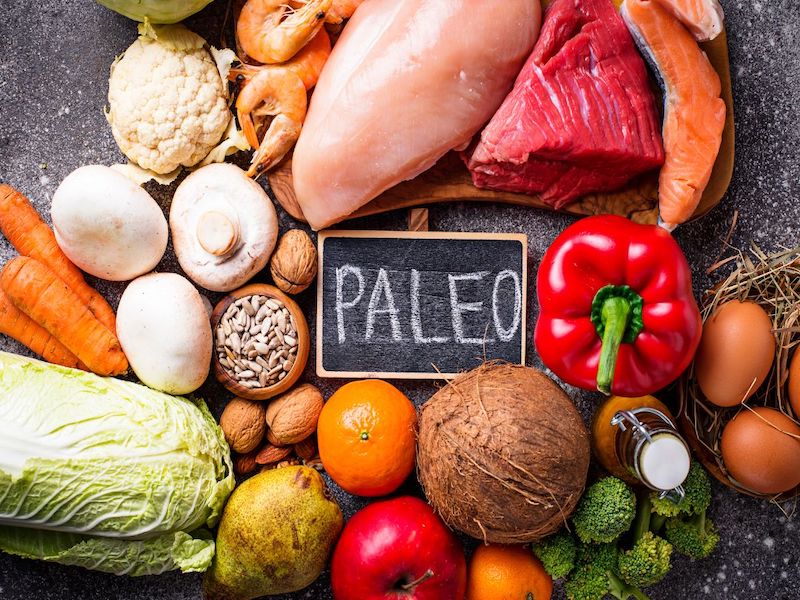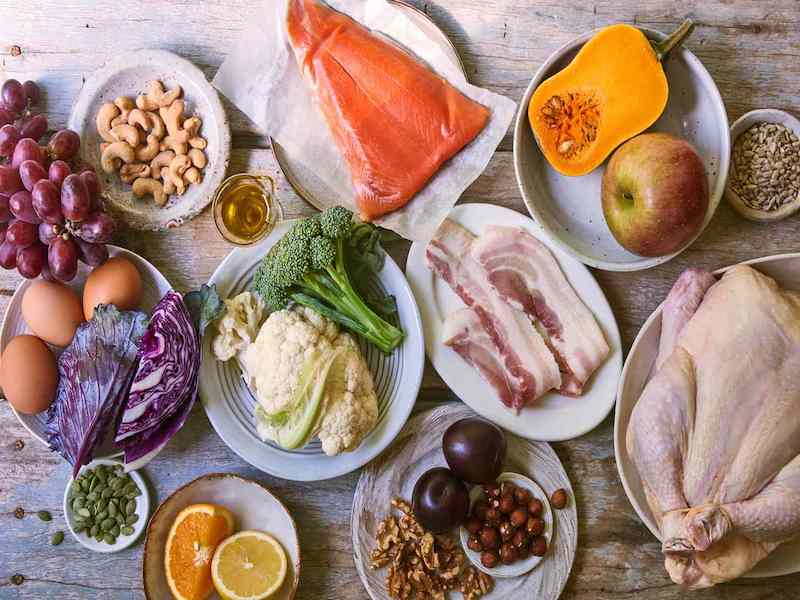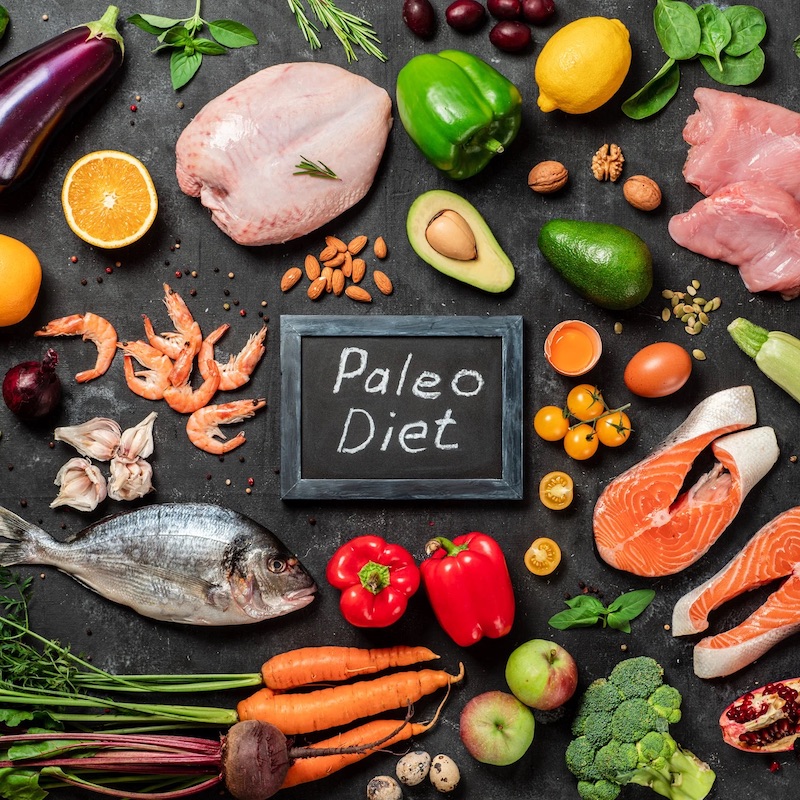
What is the Paleo diet? Benefits and menu of the Paleo Diet
The Paleo diet is a nutritional approach inspired by the eating habits of our ancestors in the Paleolithic period. Many people still do not know how to apply the Paleo Diet properly. Therefore, Evaworlds has compiled an article sharing everything about the Paleo Diet. Let’s find out.
What is the Paleo diet?
The Paleo diet is based on a meal plan that uses foods similar to what would have been eaten during the Stone Age.

The Paleo diet is a classic diet that includes foods such as lean meats, fish, fruits, vegetables, nuts and seeds. Or foods that could have been found manually such as hunting and gathering.
Another major feature of the Paleo diet is that it restricts foods that became popular when agriculture emerged about 10,000 years ago. These foods can include dairy products, legumes and grains.
The purpose of following the Paleo Diet
The Paleo diet aims to adopt a diet similar to that of our ancestors. The reason is that the modern human body is not completely compatible with the modern diet developed from agriculture, this is called the dissonance hypothesis.
Agriculture has changed what humans consume today, adding dairy, grains, and legumes to the diet. The theory is that this change has outpaced the body’s ability to adapt, leading to an increase in health problems like obesity, diabetes, and heart disease. That’s why the Paleo diet is aimed at weight loss or maintaining a healthy weight.
See more:
- The gluten-free diet: Benefits, foods and menu planning
- What is a high-protein diet? Benefits and suggestions for 15+ protein-rich foods
- Quick weight loss diet plan – Tips and notes for beginners
Benefits of the Paleo diet
In addition to weight loss, the Paleo diet also offers many other health benefits. Specifically, as follows:
Can reduce belly fat
Belly fat not only increases the risk of diabetes and heart disease but also causes many other health problems. Some studies have shown that the Paleo diet can help reduce belly fat. In one study, 10 healthy women who followed the Paleo diet for 5 weeks lost an average of 8 cm from their waists and about 4.6 kg (10 pounds) of body weight.
May increase insulin sensitivity and reduce blood sugar levels
Insulin sensitivity is the ability of your cells to respond to insulin. Increasing insulin sensitivity helps your body burn sugar more effectively. Research has also shown that the Paleo diet increases insulin sensitivity and reduces blood sugar levels.

In a two-week study, 24 obese people with type 2 diabetes followed either a Paleo diet or a diet containing moderate salt, low-fat dairy, whole grains, and legumes. After the study, both groups experienced increased insulin sensitivity. However, the Paleo diet had a stronger effect, especially in insulin-resistant people.
Reduce heart disease risk factors
The Paleo diet is similar to the diet recommended for improving heart health. It is low in salt and encourages the consumption of lean proteins, healthy fats, and fresh fruits and vegetables. Research shows that this diet helps reduce heart disease risk factors such as:
- Blood Pressure: An analysis of four studies found that the Paleo diet reduced systolic blood pressure by 3.64 mmHg and diastolic blood pressure by 2.48 mmHg.
- Triglycerides: Some studies have shown that the Paleo diet can reduce total blood triglycerides by up to 44%.
- LDL cholesterol: Research has also shown that the Paleo diet can reduce “bad” LDL cholesterol by up to 36%.
May Reduce Inflammation
Inflammation is a natural response that helps the body heal and fight infection. However, chronic inflammation can increase the risk of diseases such as heart disease and diabetes. The Paleo diet focuses on adding foods that help reduce chronic inflammation.
Paleo encourages us to eat fresh fruits and vegetables, which are good sources of antioxidants, and help neutralize free radicals that damage cells during chronic inflammation. In particular, experts recommend fish as a protein source because fish contains omega-3 fatty acids, which can reduce chronic inflammation by inhibiting hormones that promote inflammation such as TNF-α, IL-1, and IL-6.
See more:
- Fodmap diet: Solution for irritable bowel syndrome (IBS)
- What is the TLC Diet? Detailed 7-day menu suggestions and some important notes
- What is the South Beach Diet? Benefits and the most complete menu suggestions
Sample Paleo menu for 1 week
Here is a sample menu for a week on the Paleo diet. You can adjust the menu to your liking. Specifically:
Monday
- Breakfast: Eggs and vegetables fried in coconut oil, a piece of fruit.
- Lunch: Chicken salad with olive oil, a handful of nuts.
- Dinner: Hamburger (no bread) fried in avocado, with veggies and some salsa.
Tuesday
- Breakfast: Bacon and eggs, a piece of fruit.
- Lunch: Leftover burger from the night before.
- Dinner: Salmon fried in avocado with veggies.

Wednesday
- Breakfast: Meat with veggies (leftovers from the night before).
- Lunch: Sandwich in a lettuce leaf, with meat and fresh veggies.
- Dinner: Ground beef stir-fried with veggies, a few berries.
Thursday
- Breakfast: Eggs and a piece of fruit.
- Lunch: Leftover stir-fry from the night before, a handful of nuts.
- Dinner: Pork stir-fry with veggies.
Friday
- Breakfast: Eggs and veggies fried in coconut oil.
- Lunch: Chicken salad with olive oil, a handful of nuts.
- Dinner: Steak with vegetables and sweet potatoes.
Saturday
- Breakfast: Bacon and eggs with a piece of fruit.
- Lunch: Leftover beef and vegetables from the night before.
- Dinner: Grilled salmon with vegetables and avocado.
Sunday
- Breakfast: Meat with vegetables (leftovers from the night before).
- Lunch: Sandwich in a lettuce leaf, with meat and fresh vegetables.
- Dinner: Grilled chicken wings with vegetables and salsa.
Note: On this diet, you don’t need to track your calories or macronutrients (protein, carbs, or fat) at every meal. However, if you’re aiming to lose weight, cut back on carbs and limit your intake of high-fat foods, such as nuts.
See more:
- Gout diet: Menu suggestions for a nutritious week
- Benefits of lemon water you may not know
- What is the MIND diet? Benefits, foods to eat or not to eat, menu suggestions
Conclusion
Above, we have learned in detail about the Paleo diet. Hopefully, this knowledge will be useful to you in taking care of your health. Don’t forget to leave a comment below Evaworlds‘ article if you have any questions.














